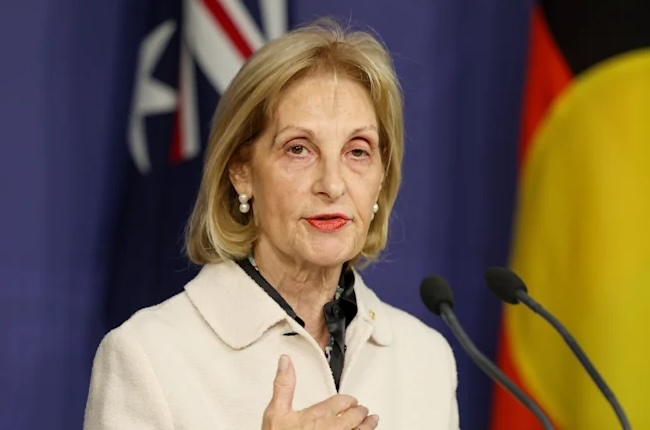Dr Evan Jonestracks the criminal history of self-regulation in the banking sector, demonstrating the critical need for a Royal Commission.
Part 1: The history of bank self-regulation
IN 1937, AUSTRALIA witnessed a Royal Commission into the banks.
The Napier Commission was established following public antagonism to a banking sector indifferent to the public interest, not least in the claimed deepening of the 1930s Depression. The Commonwealth Bank itself, created in 1911, having been appropriated by a banking elite in the 1920s, was part of the problem.
The report’s recommendations, from staid to progressive, sought to reassert public influence over monetary policy and the scale and character of credit.
The Labor member, a certain ex-engine driver called Ben Chifley, had stronger views:
Banking differs from any other form of business because any action — good or bad — by a banking system affects almost every phase of national life. A banking policy should have one aim – service for the general good of the community. The making of profit is not necessary to such a policy. In my opinion, the best service to the community can be given only by a banking system from which the profit motive is absent and, thus, in practice only by a system entirely under national control.
The Commission’s recommendations were pigeon-holed due to bank opposition and then war. Ironically, although Chifley’s radical agenda failed in the courts and ultimately led to Labor’s defeat in 1949, the Napier agenda was generally institutionalised in Chifley’s Banking Act 1945 and Commonwealth Bank Act 1945.
The 1945 banking Acts formed the basis for the post-1945 regulatory structure. This extensive regulatory structure reflected the (private) trading banks’ public character by virtue of their deposit liabilities (chequing accounts) serving as a means of exchange and of their credit creation capacity. The private trading banks wanted all the benefits of their privileged status (literally a license to print money) without any of the obligations, so they fought the regulations from the start.
Given the evolving character of financial institutions (not least the breakdown of fixed exchange rates and transformed financial globalisation), it was inevitable that the regulatory apparatus would have to be re-examined. But the ”re-examination” came in the form of the 1979 Campbell Committee inquiry, established by then Treasurer John Howard as advised by the green-behind-the-ears John Hewson.
The opening paragraph of the 1981 Campbell Report reads:
'The Committee starts from the view that the most efficient way to organise economic activity is through a competitive market system which is subject to a minimum of regulation and government intervention.'
Decades down the track, the bald-faced effrontery of this statement still fills me with despair and outrage.
One would imagine that the Campbell Committee would have analysed the origins of and reasons for the inherited regulatory structure. The Committee did nothing of the sort, claiming that prior government “intervention” was a product of imperfect capital markets that were on the road to being rectified.
The past was thus rendered irrelevant. In other words, the Campbell Report re-started history, with 1981 as "Year Zero". The entire succeeding financial system and its flimsy regulatory structure, with associated personnel and “expert” analysts, exist in a world that begins only in Year Zero.
Amongst the éminences grises deserving exposure, none is more significant than David Murray, CEO of the CBA 1992-2005. Murray, with the CBA’s chief counsel Les Taylor, presided over the forging of the privatised CBA’s corrupted culture. The Abbott Government appointed this man in December 2013 to head the Financial System Inquiry, yet Murray, rather than being a central figure in forging “reform”, is utterly representative of the problem.
This manufactured historical myopia ensured that the ongoing banking crises and the escalation and entrenchment of corruption were foreordained — as I laid out in an article in an Canberra Times. To those not bound by this absurd diktat, the current fiasco in Australia’s financial sector was entirely foreseeable.
But it’s no wonder that the current political class is so cowed. The environment is straight-jacketed by comprehensive ignorance, ideological prejudice and cowardice. Not to mention payola.
It doesn’t help that the banks contribute to political party coffers, especially to the Liberal Party, with the Libs also enjoying closer personnel linkages — Arthur Sinodinos as an exemplar. But Labor’s Achilles heel is its fearful refusal to reappraise Labor’s dominant contribution to financial deregulation, and thus question the untouchable era of the gods Keating and Hawke.
Even while Labor was furthering the deregulation of the financial sector in the mid-1980s, the banking sector’s dysfunctionality was in evidence. This malady was most striking in the banks’ rush into (so-called) “foreign currency loans” (FCLs), in which million dollar plus loans were formally denominated in Swiss francs, U.S. dollars or Japanese Yen.
The formal attraction to borrowers was the significantly lower interest rates. FCLs were “sold” to borrowers who were generally misled as to the complex nature of the beast, with the banks meanwhile ripping off the typically naïve borrowers with under-the-table fees associated with currency conversion.
The dollar (floated in December 1983) fell in 1985 (it plunged against the franc) and the borrowers faced a blowout of the loan’s principal, against which the lower interest rates were meaningless. The borrowers were left to the “mercy” of the courts, in which, with some famous exceptions, the borrowers were crushed under legalistic palaver and judicial complicity. The Labor Government’s 1991 (Martin) Parliamentary inquiry and report absorbed the dissent and supportive media coverage, and legitimised de facto the scam.
Where were the regulators during the FCL affair?
David Morgan was then deputy secretary in Treasury — the top bureaucrat overseeing the finance sector. He was nowhere to be seen. Hot on the heels of recommending to Treasurer Keating the interest rate hike that brought us “the recession we had to have” he jumped ship and joined Westpac as a senior manager in 1990, at the height of the disclosure of Westpac’s criminal culpability in the FCL saga. Morgan became Westpac CEO in 1999. During this time, Morgan ignored the claims of FCL victims for redress and compensation.
John Laker was in the prudential wing of the Reserve Bank (RBA) that later became the Australian Prudential Regulation Authority (APRA) in 1998 — Laker becoming APRA’s longstanding Chairman. In the early 1980s, the banking sector was still under an aggregate quantitative lending limit imposed by the RBA and foreign currency dealings were also monitored closely by the RBA. FCL activity was thus clearly in the RBA’s purview. Laker and his colleagues were nowhere to be seen.
Westpac FCL victim Lionel Potts wrote to the RBA on 1 August 1994 requesting:
… as a follow on from my interview with Michele Bullock on the 25 July we would now ask for copies of any Reserve Bank documents relative to this transaction [Potts’ loan] and including
(a) The application for approval as submitted
(b) The Reserve Bank approval with conditions thereto
The RBA replied on 5 August 1994:
I refer to your letter of 1 August concerning your foreign currency loan with Westpac Banking Corporation.
The Reserve Bank no longer holds any records relating to Exchange Control transactions; the last such records were destroyed in 1991/92.
Scandalous. It is pertinent that Potts, having won his case against Westpac in his Trial hearing, was destroyed in a totally corrupt appeal process in late 1991. That ludicrous judgment put paid not merely to Potts but to all Westpac FCL victims who had yet to obtain justice.
The RBA reply to Potts conforms to my experience. In July 2014, I emailed the RBA archives unit requesting information on files held relating to FCL activity and oversight in the 1980s.
I received the following reply in August 2014:
'I have … conducted several searches of our archive, but was not able to locate any records on foreign currency loans from the 1980’s.'
What? It is pertinent that Bernie Fraser was Hawke/Keating’s Secretary of the Treasury during 1984-89, from whence he became governor of the RBA during 1989-1996.
Regulatory inaction is combined with sweeping that inaction and its implications under the rug.
Ongoing disclosures of skulduggery, court cases and borrower lobbying kept the issue in the news, leading to the call in late 1995 for a Royal Commission into the matter by three government back-benchers (one Liberal, two National).
A Royal Commission was entirely appropriate, because of the complexity of the foreign currency loan facilities (they remain opaque to this day), the transparent chicanery of the banks, its implications for bank practices and culture in the deregulated environment, the character of the lax regulatory apparatus that remained and its implications for a reconsidered regulatory apparatus. That call, of course, was ignored by the powers that be.
Thus did the banks settle into an exceedingly comfortable (and escalatingly profitable) environment of “anything goes”, accompanied by the perfunctory and cynical paraphernalia of “self-regulation” — namely the banking ombudsman and the code of banking practice.
Dr Evan Jones is a retired political economist. He has been writing on bank malpractice against small business and the family farmer for over a decade.
For a more in depth analysis of the latest in the series of parliamentary inquiries into system bank corruption, read Dr Jones' 6-part series:

This work is licensed under a Creative Commons Attribution-NonCommercial-NoDerivs 3.0 Australia License
Monthly Donation
Single Donation
Investigate Australia. Subscribe to IA for just $5.









